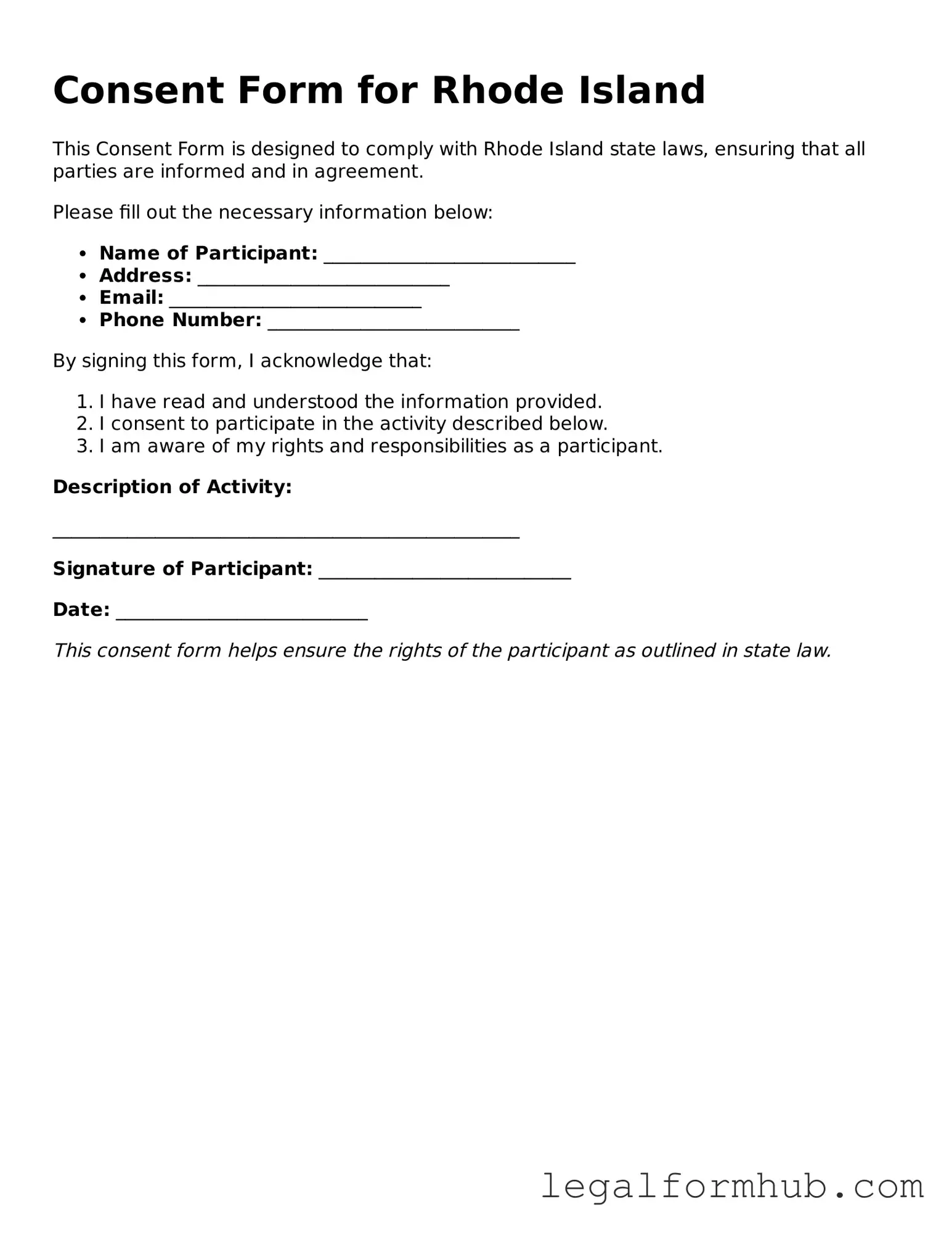The Release of Liability form is similar to a Consent form in that both documents aim to protect one party from legal claims. When individuals sign a Release of Liability, they acknowledge the risks involved in an activity and agree not to hold the other party responsible for any injuries or damages that may occur. This form is often used in recreational activities, sports, and events where participants engage in potentially hazardous activities.
The Waiver form serves a similar purpose as a Consent form by allowing individuals to relinquish their right to pursue legal action against an organization or individual. When a Waiver is signed, it indicates that the individual understands the risks and agrees not to sue for any injuries that may arise. This document is commonly used in settings such as gyms, adventure sports, and other activities where participants might face risks.
The Medical Release form shares similarities with a Consent form, particularly in medical contexts. This document allows healthcare providers to obtain permission from a patient or their guardian to disclose medical information or provide treatment. By signing a Medical Release, individuals grant consent for their medical records to be shared, ensuring that healthcare professionals can make informed decisions regarding their care.
The Informed Consent form is closely related to the Consent form, especially in healthcare and research settings. This document ensures that individuals understand the nature of a medical procedure or research study, including potential risks and benefits. By signing the Informed Consent form, participants acknowledge that they have received sufficient information to make an educated decision about their involvement.
To better understand the ownership transfer process, it's beneficial to consult a practical guide on the important aspects of the Trailer Bill of Sale. This will provide crucial insights and enhance your familiarity with the necessary procedures involved in completing this document.
The Parental Consent form is another document that resembles a Consent form, particularly when minors are involved. This form is used to obtain permission from a parent or guardian for a child to participate in activities such as school trips, sports, or medical procedures. The Parental Consent form ensures that guardians are informed about the activity and agree to the associated risks on behalf of their child.
The Non-Disclosure Agreement (NDA) can also be compared to a Consent form in the context of confidentiality. An NDA is a legally binding contract that prevents individuals from sharing sensitive information. While it does not address risks in the same way a Consent form does, both documents require the signature of the parties involved, indicating their agreement to the terms laid out within the document.
The Participation Agreement is similar to a Consent form in that it outlines the expectations and responsibilities of individuals participating in an event or activity. This document often includes a section where participants acknowledge the risks involved and agree to follow specific rules. By signing the Participation Agreement, individuals give their consent to participate while understanding the associated responsibilities and potential hazards.
